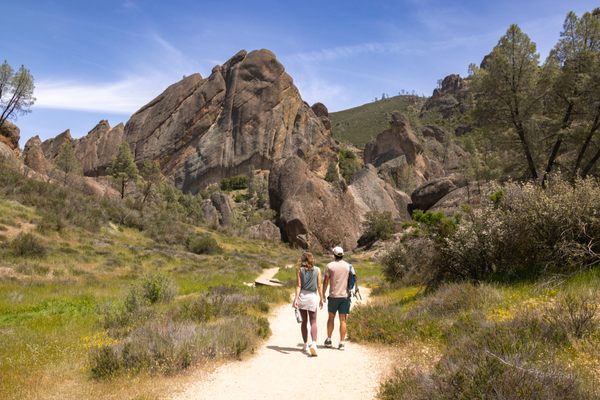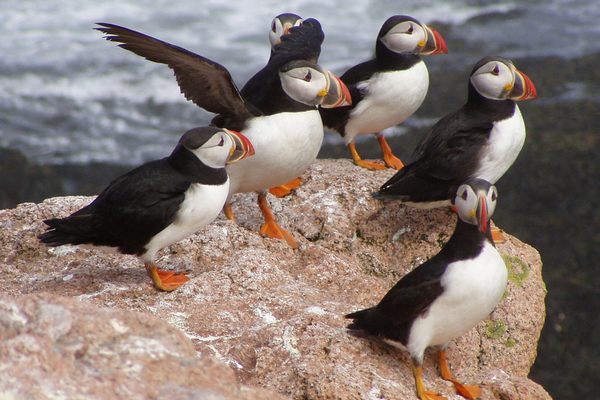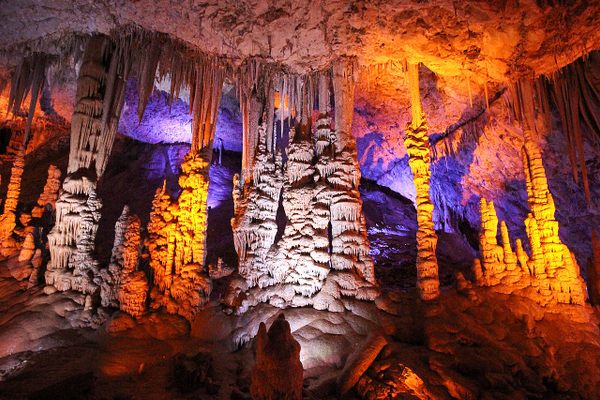About
The twisting rock spires, expansive caves, deep canyons, and rolling hills of Pinnacles National Park bring visitors from all over to explore its volcano-formed topography. But it’s not just people who have found peace and solace in the park’s 26,000 acres. This national park, located 120 miles south of San Francisco, is also home to several endangered condors. Part of the California Condor Recovery Program since 2003, Pinnacles also serves as a release site for condors who were bred in captivity.
In the 1980s, these large birds (their wingspan can be up to 10 feet and they can weigh up to 20 pounds), were on the brink of extinction, mostly due to human interference and pollution, particularly lead poisoning. But a major conservation project, which included zoos and state agencies, among many others, aimed to save the mighty bird.
At one point, all remaining wild condors were captured and brought to zoos with the hope of breeding them and increasing their numbers. As the California Department of Fish and Wildlife reported, in 1987 “The entire world population of the species was 27 birds, and all were housed in two captive breeding facilities in southern California.” No one knew for sure if this breeding program would work. But it seemed that the condors were as determined to survive as the scientists were to save them; by 1999 there were 161 birds.
These captive-bred condors were then released into the wild, and their numbers have increased. By 2018, there were 488 condors in the world, and 312 of those were wild.
Young condors are released in Pinnacles when they are a little over a year old. They are placed in a remote area of the park for about two months so they can get used to their new environment. But don’t worry, visitors can still catch sight of these animals throughout the park. The best spot to see them is High Peaks, in the early morning or early evening. You may also catch them in flight on the Bench Trail near the visitor center; Two viewing scopes have been placed there by the park.
On closer inspection of the birds, you may notice their colorful tags. These are placed there by Pinnacles scientists to monitor their health and activities. The park even has profiles of the tagged birds so that you’ll know exactly who you’ve spotted.
Though the number of California Condors is increasing, the animals are still considered critically endangered, meaning that programs like the ones at Pinnacles are vital to their survival. These animals are also helped by visitors to the park. By observing “leave no trace” principles, small pieces of trash, which are particularly harmful to young condors, become less of an issue. Kelli Walker of the Oregon Zoo, which is part of the California Condor Recovery Program puts it simply, “With so few California condors left in the world, each bird is vitally important.”
Related Tags
Know Before You Go
There is no road that connects the east and west entrances of the park. High Peaks, one of the trails you can take for condor spotting, is strenuous with elevations up to 1,425 feet.
Published
June 20, 2024




























